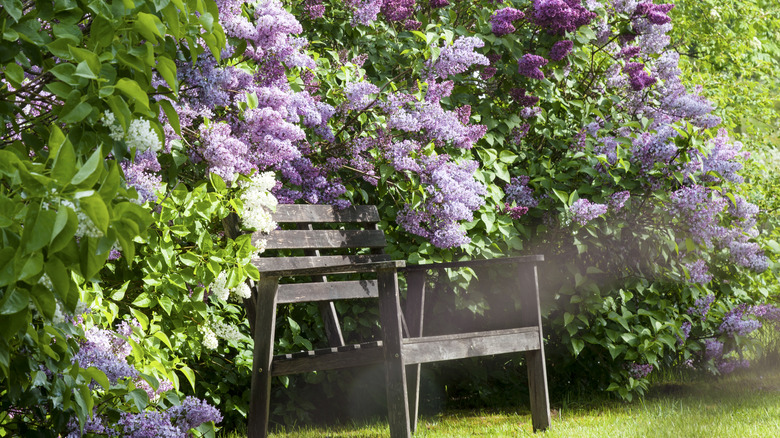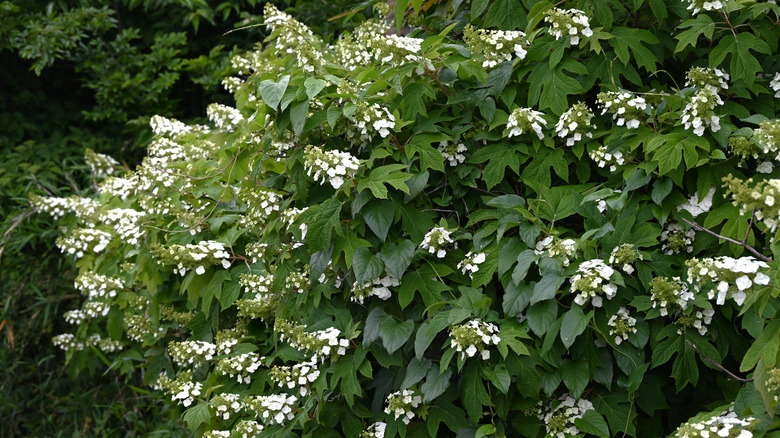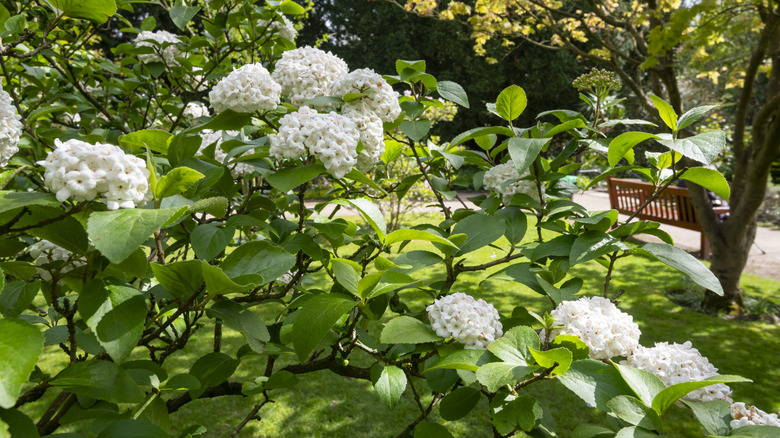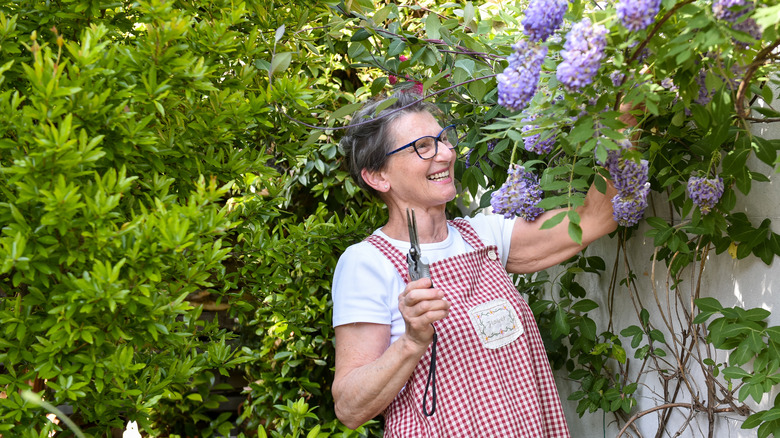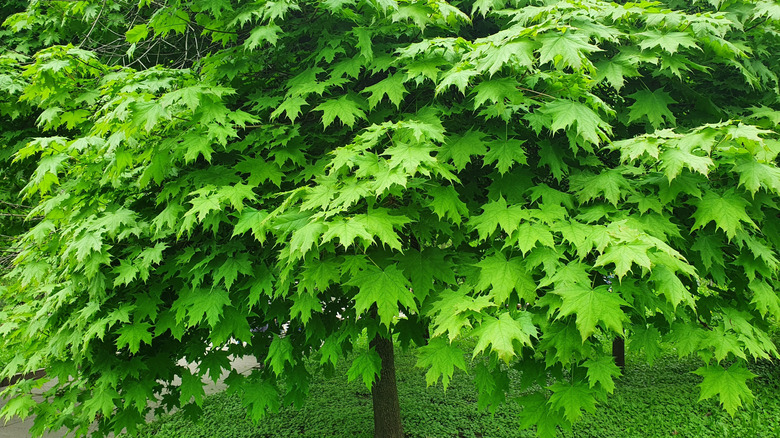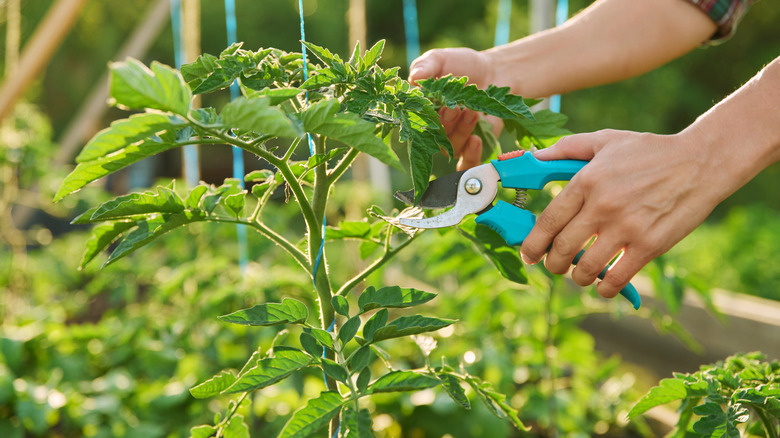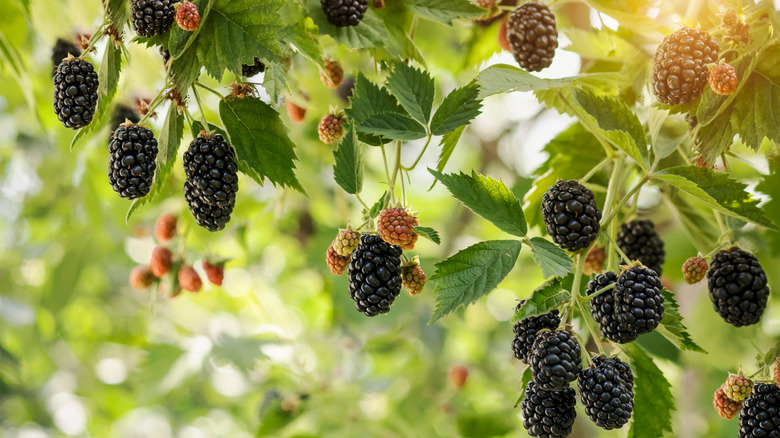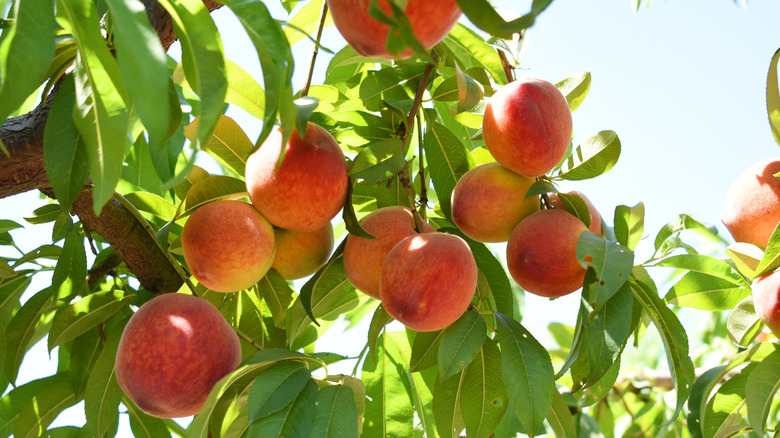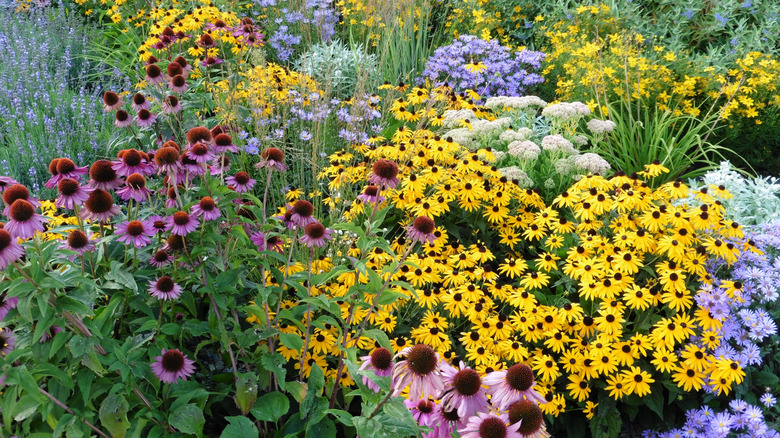10 Plants You Should Prune In July To Keep Them Happy And Healthy
Timing is everything when it comes to growing a healthy garden. There's an ideal time to tackle nearly every task imaginable, from planting to harvesting. July might feel like just a waiting period, interspersed with watering and weeding, until it comes time to harvest edibles or put flowers to bed for the year. This month, and sometimes a certain part of this month, contains some pretty hard-and-fast deadlines for light pruning. Pruning later in the year can cause growth problems for some plants. For others, later pruning might make you miss the window for extended flowering time. Well-timed pruning can improve the plants' air circulation and channel their valuable energy toward creating fresh new growth or fruit.
In many places in the northern hemisphere, there are plants just begging for a trim in July. However, keep in mind that flowering or fruiting time might be slightly different in your area, so July might not be the sweet spot for pruning your own plants of these types. When and whatever you prune, be sure to clean and disinfect your gardening tools before making any cuts. Also, if you've planted your shrubs this year, give pruning a miss until next year.
Spring-flowering bushes
After your lilacs and azaleas finish their floral show for the season, they are ready for a trim. Other bushes that bloom before mid-June in most parts of North America are forsythia, mock orange, and rhododendron. Prune them right after they finish blooming. That said, don't prune azaleas after mid-July, since it affects next year's flowering. Use either the "renewal" or the "selective heading" methods. Renewal pruning involves cutting about one-third of the largest stems to the ground. Selective heading is removing no more than a third of the new branch ends.
Oakleaf hydrangea
While oakleaf hydrangea (Hydrangea quercifolia) is a shrub that blooms in spring and early summer, it deserves special mention. You can prune other types of hydrangeas at any time, but these ones flower on old wood rather than this year's growth. Once the blossoms fade, prune these hydrangeas right away. Wait too long, and you run the risk of cutting off the buds for next year's blooms. Also clean up the interior of the bush by removing any branches that cross. This will improve air flow for the whole plant.
Viburnum
Depending on when your area gets its first frost, July might be the prime time to prune your viburnum. It's important not to prune this plant closer than two months to your first frost, given that new growth could suffer frost damage. In general, most viburnums only need pruning if you want to maintain their shape. No matter the variety, subject them to shears only after they've finished blooming. Snowball viburnum blooms on the prior year's growth, so if you have one, choose your branches carefully. Trim off old ones a ¼ inch above where they intersect with other branches.
Wisteria
Fast growing, even rambunctious wisteria really benefits from some mid-season snipping. This vining plant needs a trim in mid-winter as well as midsummer, and this second snip of the year is meant to control overgrown vines and to encourage more productive flowering. Prune wisteria two months after it flowers in spring. Cut back this season's growth by counting up three buds from the shoot's base to keep buds for next year's flowers intact. Older growth can even take a vicious summer cut. Lop vines to a height 3 feet lower than you want next year's growth to be.
Bleeder trees
Trees like maples, dogwoods, birches, and elms are called "bleeder trees" due to their tendency to leak lots of sap after pruning. These species will always put out a bit of sap, but once the tree is well settled into its growing season in early summer, cuts will bleed much less. Cut branches back to their collar along the trunk or snip in front of a bud. Before tackling the job, make sure that your tree really needs a trim. Young trees that need some shaping are good candidates, but you can let nature run its course for older ones.
Tomatoes
Nobody likes a sucker. These shoots are aptly named, since they suck energy away from your tomatoes' forming succulent fruits in favor of unnecessary foliage. By July, you've probably got plans for every one of your tomatoes. Help the plants deliver on your expectations by snipping those suckers! Identify suckers by looking at the point where a branch juts from the main stem. Any additional growth coming from this spot is a sucker. Complete sucker eradication can leave you with larger fruit but leaving a few may boost your overall harvest.
Black raspberry and blackberry bushes
If black raspberry and blackberry bushes are done with fruit production by July in your neck of the woods, prune their canes. The kind of pruning these berries crave is called "tipping" — cutting away the newer, non-woody shoots to spur lateral branch growth. This ups your chances of a high bloom rate next year. Once the new canes grow to between 2 and 4 feet, cut about 3 to 6 inches off the end of the shoot. Avoid doing this to standard raspberry shrubs; they produce more fruit from an unbranched cane.
Herbs
One of the biggest mistakes people make when growing herbs is forgetting to prune them during the growing season. A moderate snip of no more than one-third of most herbs reenergizes the plant to put out more leaves. In July, trim between one-third and half of the branches' length. You can pinch off extra oregano and thyme regularly during summer as well as flowers on any herbs.
Fruit trees
Pruning your fruit trees mid summer gives them a proverbial shot in the arm. Not all fruit trees need it, they don't need much, and it's crucial to use clean tools. Trees that can benefit from a minor summer snip are apricots, cherries, peaches, Japanese plums, and nectarines. Do this only in dry weather to prevent the cuts from becoming infected with diseases. On most fruit trees, eliminating extra shoots allows more sunlight to reach the fruit through the foliage.
Tall flowering perennials
Wilting blossoms and the first hints of seeds forming are your cues to take the scissors to your tall perennial flowers. By the middle or end of July, your flowers may just be finishing up their first round of blooms. Cut plants like garden phlox halfway back, give them a bit of fertilizer, and you can expect round two of blooming. Flowers that benefit from this are coreopsis, lantana, verbena, monarda, Shasta daisies, geraniums, blanket flowers, and salvia.

